AFL grand final lists 2021: How Melbourne built its list into a premiership team
Smart trades, savvy work at the draft, an ounce of luck and a hard sell to Gold Coast’s co-captain. Here’s how Melbourne built a premiership list.

AFL
Don't miss out on the headlines from AFL. Followed categories will be added to My News.
All Melbourne’s big guns were there.
Coach Simon Goodwin, co-captains Jack Viney and Nathan Jones, the man who would eventually succeed them, Max Gawn, as well as Jake Lever, the star recruit from a year earlier.
They were gathering for a good reason. The Dees were trying to convince Gold Coast’s Steven May – another co-captain – to join them as the final piece of their defensive master plan.
Kayo is your ticket to the best local and international sport streaming Live & On-Demand. New to Kayo? Start Your Free Trial >
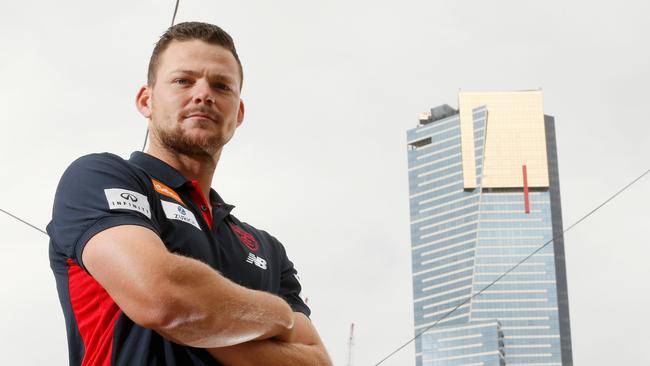
The opportunity presented when prolific spearhead Jesse Hogan requested a trade home to play for Fremantle.
That decision coincided with Sam Weideman’s breakout finals series in Hogan’s injury absence and Tom McDonald becoming a 50-goal forward.
Lever and May share the same agent, Hemisphere Management Group’s Alex McDonald, whose brothers, James and Anthony, played for Melbourne.
McDonald helped orchestrate the blockbuster deal for Lever to cross to the Demons at the end of 2017, in a package that saw them boldly give up two first-round draft picks.
After years of mediocrity, Melbourne was eyeing success.
But May had a major choice to make.
His fellow Suns skipper, Tom Lynch, had already revealed he was exercising his free agency rights to join powerhouse club Richmond, whereas May was contracted for 2019.
Lever had a similar dilemma about whether to leave Adelaide, but became enamoured with the Demons’ emerging group, including Christian Petracca and Angus Brayshaw from his draft class.
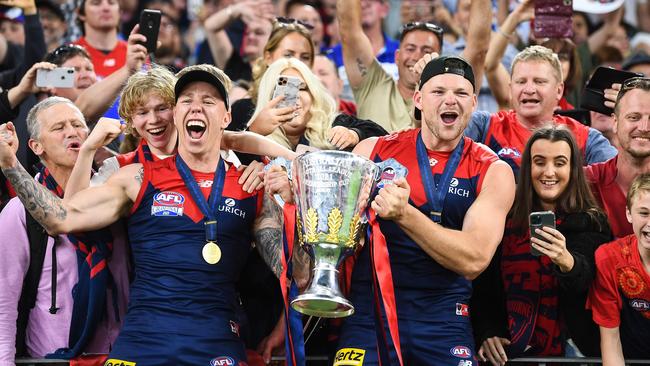
The pitch to May was the same as the one made to Lever.
In short, Melbourne felt it had transformed a once-pained club’s culture, established great camaraderie between the players and was building something special.
Lever had only been there for one season but was already making his mark. He was the Demons’ trump card and the enticement for what May could achieve in red and blue.
Fast-forward three years – and plenty of water flowing under the bridge – and they are both All-Australians and backline linchpins for grand final-bound Melbourne.
In between, critics questioned why the Demons used the pick six on May that it gained from the Dockers for Hogan and traded to Gold Coast rather than drafting Ben King.
That external debate is long over despite King’s vast promise. Winning silences everything, as Melbourne and Goodwin know all too well.

“I could see Steve was very passionate about the culture side of things,” Lever told the Herald Sun.
“Then when we spoke about myself and him coming together, he was as rapt as I was. When the trade got done, it was obviously very satisfying for both of us.”
The idea was the yin-and-yang defensive couple would complement each other’s strengths, which have seen them become the faces of the AFL’s stingiest defence – but it’s not just them.
Harry Petty’s stepped in wonderfully for the sidelined Adam Tomlinson to be the third key defender, Christian Salem had an All-Australian-calibre season and others such as Trent Rivers, Jake Bowey, Michael Hibberd and Joel Smith have contributed.
“Steve’s such a great one-on-one defender and that’s something I’ve worked towards, because in the modern game you’ll have to do it at some stage every game,” Lever said.
“He helps me so much with that side of the game, then my strength is probably reading the footy and knowing where it’s going to go and intercepting off that.
“To Steve’s credit this year, that’s what he’s worked really hard at. We watch a lot of vision together, along with Harrison Petty, Adam Tomlinson, Marty Hore and Joel Smith.”
HOW THE DEMONS EMERGED FROM HELL
Hiring Jason Taylor
The decision to poach Taylor from Collingwood in December 2012 has proven a masterstroke.
Ex-Demons coach and Magpies assistant Mark Neeld was the connection in the switch of clubs.
Taylor’s now arguably the game’s No.1 recruiter, selecting the likes of Christian Petracca, Clayton Oliver, Christian Salem, Angus Brayshaw, Luke Jackson and Kozzy Pickett.
The Oliver and Jackson selections were his boldest and finest.
Sweet-kicking Jake Bowey can probably be tacked on that list of first-round prizes, too.
Melbourne could once never be trusted no matter how many draft picks it boasted, but in the Taylor era it finds stars at the top and bargains down the order.
None of Tom Sparrow (pick 27), Charlie Spargo (29), Bayley Fritsch (31), Trent Rivers (32), James Jordon (33), Harry Petty (37), Alex Neal-Bullen (40), Jayden Hunt (57) or James Harmes and Joel Smith (rookies) were top prospects.
Demon-turned-Bulldog Mitch Hannan (46) was another clever choice.
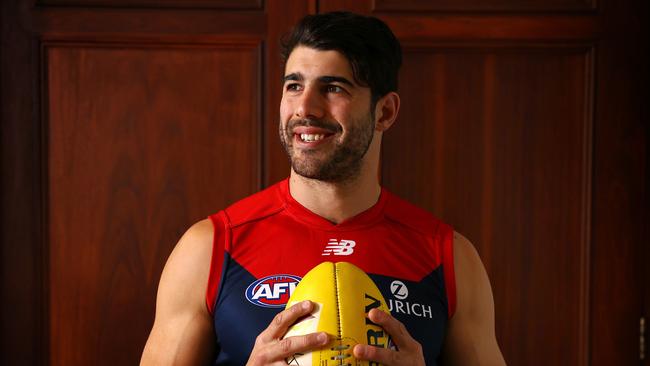
Taylor once said: “In my job, ideally you don’t want to be going to a club after they’ve won a premiership. You want to be going to Melbourne, who hasn’t won one (since 1964) – it’s a challenge you’re seeking to show your competitive spirit.”
Aggressive trading
Tim Lamb succeeded Todd Viney as Melbourne’s list manager in early 2018, when Viney firstly became more involved in football operations then departed after the 2019 season.
Viney is credited with playing an integral role in the Demons’ list transformation but the lower-profile Lamb deserves plenty of plaudits.
He’s filled holes in Melbourne’s playing list and employed aggressive trading tactics that have pretty much all been a raging success.
Under Lamb’s direction, the Demons rarely haggle too long over value and are happy to pay a fair price if they believe in what’s coming in.
That includes giving up two first-round selections as part of the Jake Lever deal, and the 2019 pick swap with North Melbourne, where Melbourne gave up picks 26, 50 and a future first-round selection for pick eight.
A subsequent trade with Fremantle saw the Dees slide back a couple of spots in the first round – all with the view of nabbing Kozzy Pickett, after securing ruckman Luke Jackson.
A clear, undeviating strategy

Not only has Melbourne used second-round selections wisely at the draft but it’s also consistently and successfully dangled them in front of rivals to bring in mature talent.
The Demons recruited Ed Langdon, Ben Brown, Michael Hibberd, Jake Melksham and even current Hawk Sam Frost and the retired Bernie Vince for the equivalent of second-round picks.
That’s good business however you look at it.
The other part of Melbourne’s list strategy was to use the advent of future pick trading to its advantage.
The Kangaroos deal two years ago, which saw them add Kozzy Pickett to Luke Jackson, was only the second example.
The Demons also sent a 2016 first-round selection to Gold Coast to have two top-10 picks in 2015, which they used on Clayton Oliver and Sam Weideman.
Draft wheeling and dealing behind Smith falling to Dogs
Connor Rozee and North Adelaide played unlikely roles in the Western Bulldogs’ journey to Saturday night’s grand final.
Future Bulldogs star Bailey Smith made it clear to any would-be non-Victorian suitors in his draft year that he wanted to stay in Melbourne.
That didn’t stop Port Adelaide from seriously considering Smith with the fifth pick of the 2018 draft, just like when the Power selected a reluctant Ollie Wines No.7 overall six years earlier.
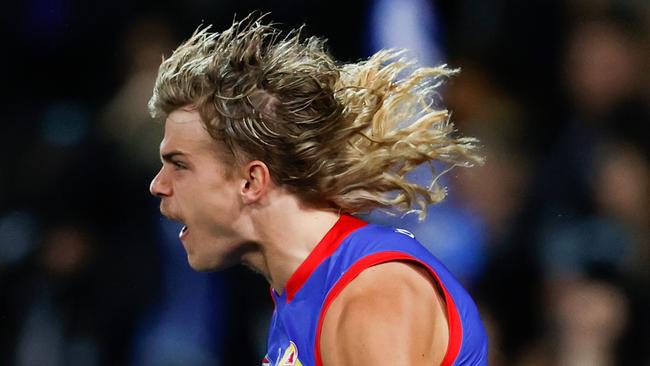
It was well established that Gold Coast, which selected Jack Lukosius and Izak Rankine with the second and third picks, planned to take Ben King at No.6.
But Rozee’s excellent SANFL finals series for North Adelaide’s senior side – after transforming from a creative forward into a damaging half-back – convinced the Power he was its man.
Smith then, as expected, made it past the Suns and into the gleeful hands of the Dogs, who rated the gifted and dedicated midfielder as highly as any player in that draft.
He defied Achilles bursitis, which sidelined him for the second half of his draft year and delayed his first AFL pre-season, to make a Round 1 debut – and he’s played in all 66 games since arriving at the Kennel.
Taylor Duryea, himself part of the Bulldogs’ list story as he tries to win a third flag after playing in two at Hawthorn, said Smith was “the most-ready 18-year-old you’ve ever seen come into the competition”.
Smith has continued the Bulldogs’ brilliant strike rate in the first round of the draft.
Their picks in that territory in the past nine years were Jake Stringer and Jack Macrae (2012), Marcus Bontempelli (2013), Tim English (2016), Aaron Naughton and Ed Richards (2017), Bailey Smith (2018), Cody Weightman (2019) and Jamarra Ugle-Hagan (2020).
Weightman was considered a Jamie Elliott clone in his draft year but some believe he even has Toby Greene tendencies.
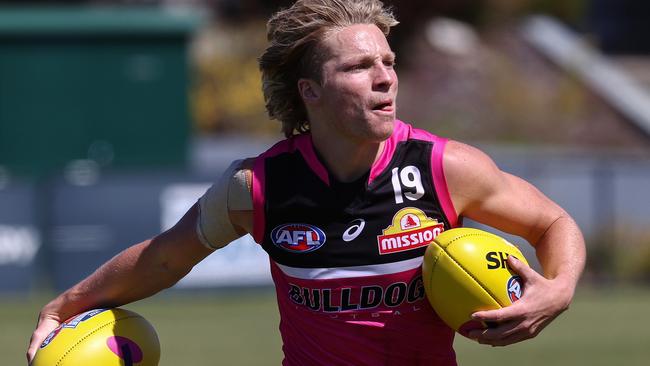
Melbourne jumped in before the Dogs to draft Kysaiah Pickett two years ago but Weightman is proving a very handy consolation prize, while Naughton’s evolution from defender to strong-marking forward was a pleasant surprise.
Ex-Bulldog Dan Southern considers Naughton the next-best thing to Hawthorn great Dermott Brereton.
The club’s two first-round draft selections before that were 2016 premiership player Clay Smith and Mitch Wallis, who missed out on the last flag only because of a broken leg.
Next Generation Academy product Ugle-Hagan and father-son prospect Sam Darcy – who will be drafted this year – being top-three talents who dropped into their lap were the icing on the cake.
But a bevy of smart choices down the order have added to their recruiting lustre.
Josh Dunkley (pick 25), Laitham Vandermeer (37), Bailey Dale (45), Caleb Daniel (46), Bailey Williams (48), Lachie Hunter (49), Zaine Cordy (62), Jason Johannisen and Roarke Smith (rookies), and Ryan Gardner (mid-season draft) have all become senior regulars.
Simon Dalrymple (2010-17), Nick Austin (2018-19) and Dom Milesi (2020-present) were the national recruiting managers during this period.
Dalrymple is now in the same role at the Swans, while Austin succeeded Stephen Silvagni as Carlton’s list boss.
They aren’t the only Bulldogs talent spotters who’ve been snapped up elsewhere.
Jason McCartney was their list manager from 2012 until after the 2017 draft, and integral in building the 2016 premiership side, before accepting the same position at the Giants.
The razor-sharp Sam Power replaced McCartney.
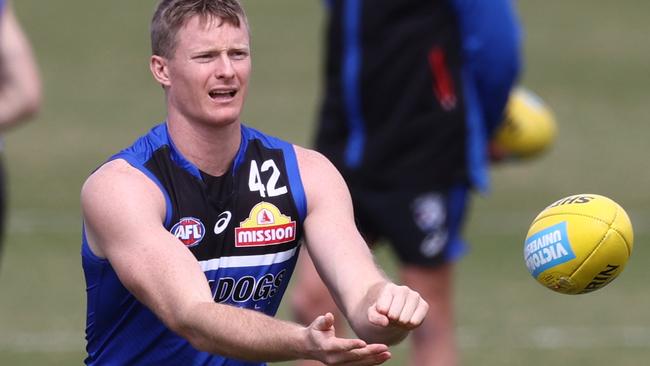
Plugging holes
Duryea notes the major difference between Hawthorn’s list strategy and the Bulldogs’ is the latter’s longer commitment to the draft and willingness to play more kids.
But he sees striking similarities in the success both clubs have had in identifying mature talent from opposition teams to fill list holes.
The Dogs brought in at least two players from other clubs in each of the past four years.
It started with Josh Schache, Hayden Crozier and Jackson Trengove (2017), continued with Duryea and Sam Lloyd (2018) and Alex Keath and Josh Bruce (2019), then Adam Treloar, Stefan Martin and Mitch Hannan came in last year.
“With football, the moment you stop trying to progress or get a leg up on the opposition, you’re going to fall backwards a long way,” Duryea told the Herald Sun.
“Not every move you make is necessarily going to be successful, but you’ve got to have a plan you stick to or an outcome you try to achieve.”
Schache was a reclamation project-of-sorts, who also fit the need for help up forward.
Duryea and Lloyd brought a dollop of experience at opposite ends of the ground, while Bruce and Keath went a long way to solving the club’s longstanding bookend issues.
Bruce was only two goals short of kicking 50 in a season for the second time in his career this year when he cruelly ruptured the ACL in his left knee in the dying stages of Round 21.
Billy Gowers led the club’s goalkicking with only 26 in 2018.
Martin, who turns 35 in November, was viewed as one of the final pieces in the premiership puzzle, as someone who could unburden developing big man English from his heavy ruck load.
Hannan is a highly skilled and versatile role player, then there’s Treloar, who many believed was surplus to demands, given Luke Beveridge’s side was already overflowing with midfield riches.
But, as with Smith in his draft year, the Bulldogs have sometimes taken the approach of grabbing the best player possible regardless of position.
They were always confident of finding a role for someone who could run like Treloar, especially with Collingwood paying for a sizeable chunk of his contract.
Duryea concurred: “With guys like ‘Ads’ Treloar; it’s talent you just can’t pass up on.”
Importantly, the Dogs didn’t have to cough up a first-round pick for any of the aforementioned recruits, after doing so in 2014 and 2015 – one of those occasions being the deal for Tom Boyd.
That enabled them to keep adding quality draft pieces to a list core that has matured before Power and co.’s eyes.
“We’ve probably started to get a better mix,” Duryea said.
“For a long time I felt it’s been a lot of younger talent, but they’ve now found themselves in their mid-20s, which is ideal, then they’ve added players like myself for experience and top-end talent like Bailey Smith and Cody Weightman.
“Any sort of group trying to vie for a premiership; once that core group have been together for a while – what you’ve got mainly with our midfield – then it all starts coming together.”
More Coverage
Originally published as AFL grand final lists 2021: How Melbourne built its list into a premiership team




